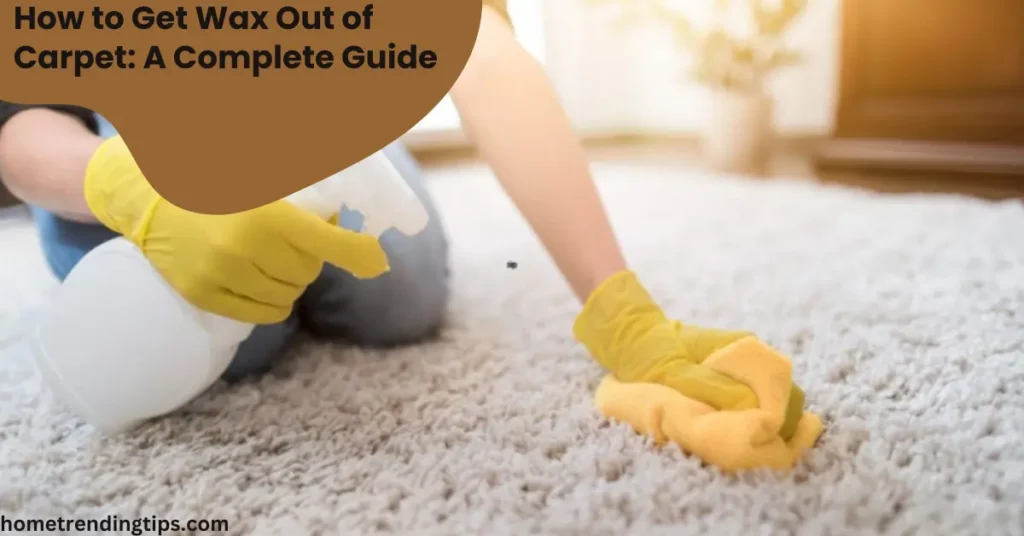Accidentally spilled candle wax on your carpet? You’re not alone. Whether it’s from a romantic dinner gone wrong or a relaxing night with scented candles, wax on carpet is one of the most common household mishaps. The good news? You don’t need harsh chemicals or expensive professional cleaners to fix it. In this guide, you’ll learn exactly how to get wax out of carpet—quickly, effectively, and safely.
We’ve combined expert advice from multiple trusted sources to walk you through the best DIY techniques that work on everything from plush rugs to Berber carpets. Let’s break it down.
Why Candle Wax is Tricky
Candle wax can quickly turn a relaxing evening into a cleaning nightmare. When hot wax drips onto carpet, it seeps between the fibers, solidifies rapidly, and clings tightly to the weave. Once it dries, it forms a stubborn residue that is not only unsightly but also challenging to remove without risking damage to the carpet pile. The key to effective wax removal lies in understanding both the type of wax you’re dealing with and the material of your carpet, as this will help determine the safest and most efficient cleaning method.
Common Types of Candle Wax and How They Behave:
Understanding the type of candle wax helps you choose the most effective removal technique. Each wax type reacts differently to heat, freezing, and scraping methods.
Paraffin Wax:
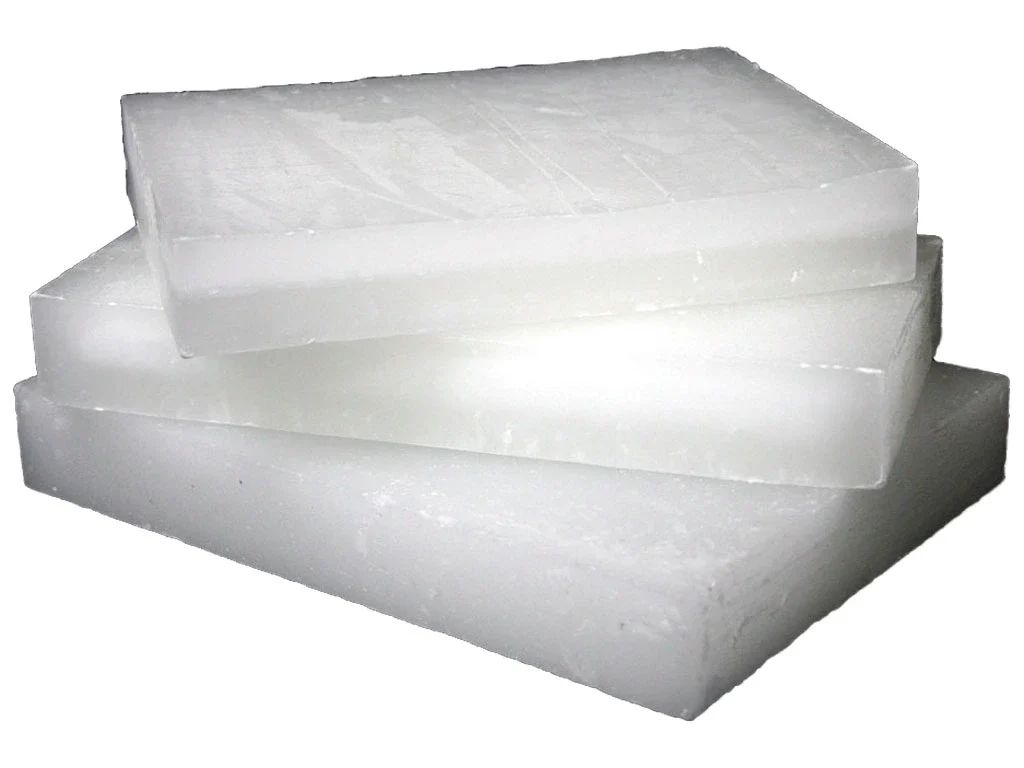
This is the most widely used candle wax and has a relatively low melting point. It becomes solid quickly but can be easily reheated and lifted using mild heat techniques such as a warm iron or hairdryer. Paraffin is often used in scented and decorative candles, so it may leave an oily or colored stain behind, requiring additional spot cleaning.
Soy Wax:
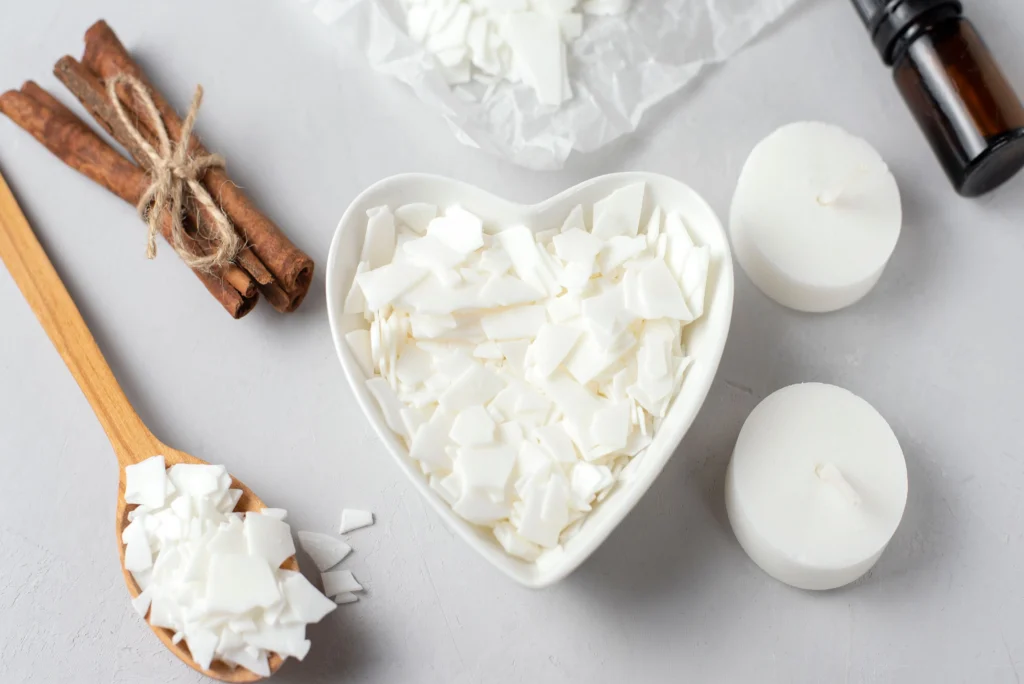
Made from soybean oil, soy wax is softer and more pliable than paraffin. It tends to smear rather than flake when scraped, especially if it hasn’t fully hardened. However, its lower melting point makes it easier to lift with minimal heat, and it’s less likely to stain fabrics compared to colored paraffin.
Beeswax:
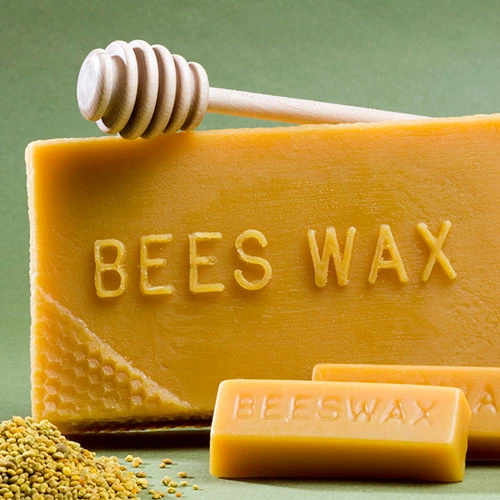
Known for its natural origin and density, beeswax has a higher melting point and is much firmer once it cools. Because of its toughness, it’s best handled with a freeze-first approach. Chilling the wax until it’s brittle allows you to chip it away without forcing it deeper into the carpet. Beeswax also tends to leave behind a heavier residue, so a combination of freezing, scraping, and heat absorption is usually necessary for full removal.
Understanding which wax you’re dealing with not only speeds up the cleanup but also prevents accidental carpet damage. Whether it’s synthetic or natural wax, pairing the right method with the wax type ensures cleaner, safer results every time.
How to Remove Candle Wax from Carpet: Step-by-Step
Follow these simple yet effective steps to safely lift candle wax from your carpet without causing damage. Each method is tailored to target both fresh and stubborn wax stains.
Step 1: Freeze the Wax
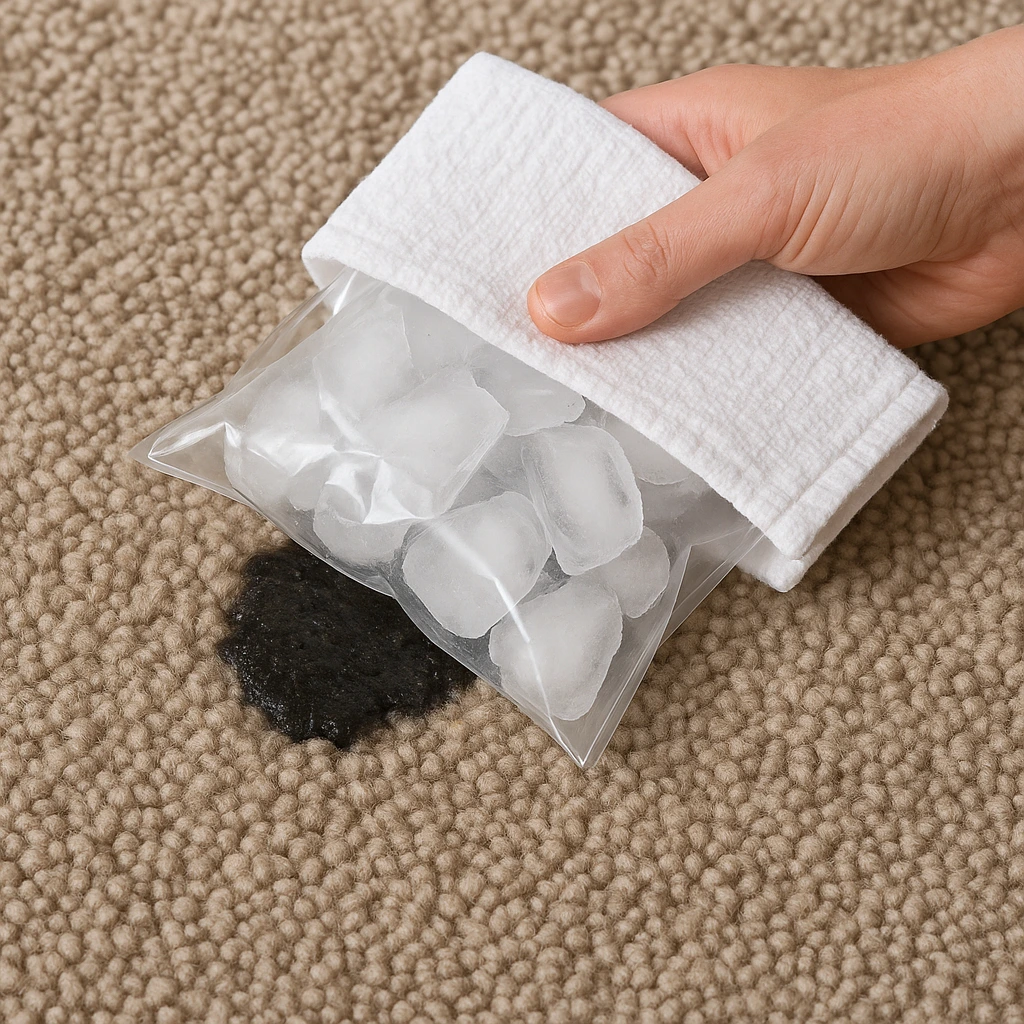
The first step in removing wax from carpet is solidifying it.
- Place a bag of ice or an ice pack directly on the wax.
- Let it sit for 10–15 minutes until it’s completely hardened.
- Wrap the ice in a towel to prevent moisture from soaking into the carpet.
Step 2: Gently Scrape Off Hardened Wax
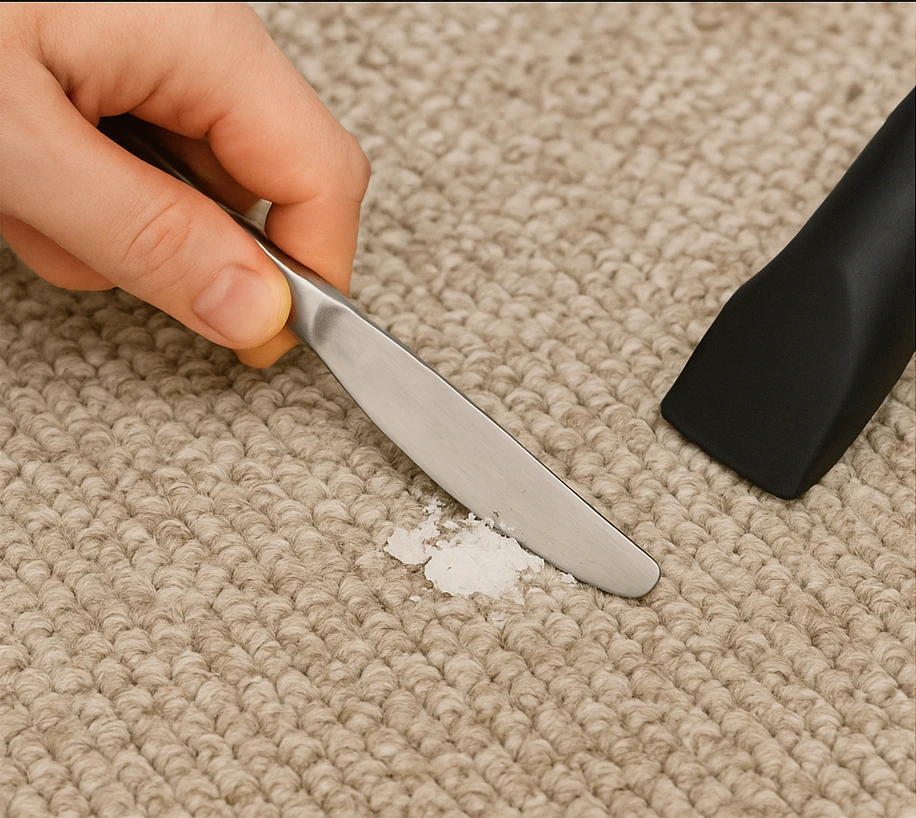
Once the wax is solid:
- Use a dull butter knife to gently lift and chip away the hardened wax.
- Be cautious on looped carpets like Berber to avoid fraying fibers.
- Vacuum up any loose bits of wax for a clean working area.
Pro Tip: If the wax spill is on a small rug or tablecloth, place it in the freezer for faster hardening.
Step 3: Heat to Lift Residual Wax
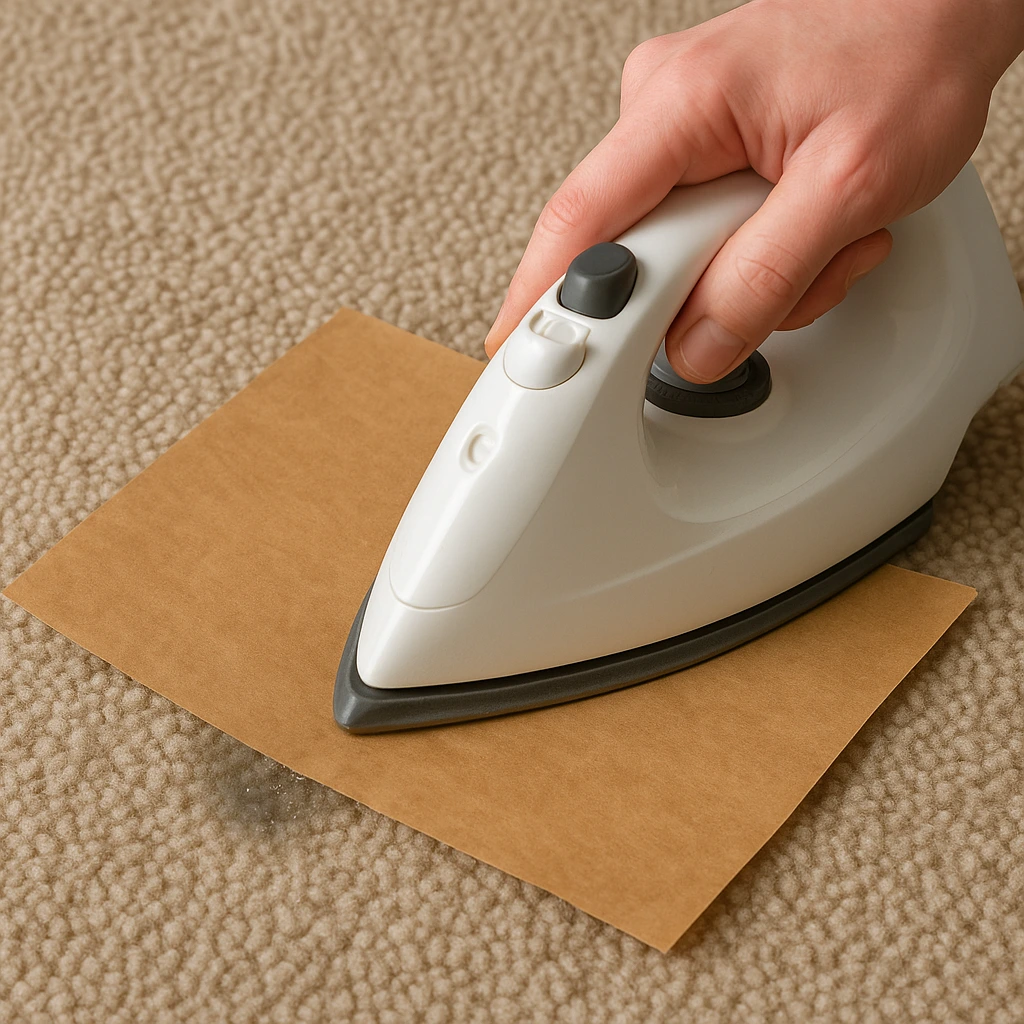
Now that you’ve removed the surface wax, it’s time to deal with the residue embedded in the carpet.
- Place a brown paper bag, paper towel, or clean cotton cloth over the wax stain.
- Turn on your iron to a low to medium setting with steam turned off.
- Gently press and move the iron in circular motions for 15–30 seconds.
As the wax softens, it will transfer to the paper or cloth. Keep repositioning the paper to clean spots and repeat until no more wax lifts.
Alternative: No iron? Use a hair dryer set to medium heat. Hold it at least 8 inches away and use the same blotting method.
Step 4: Clean Any Remaining Stain
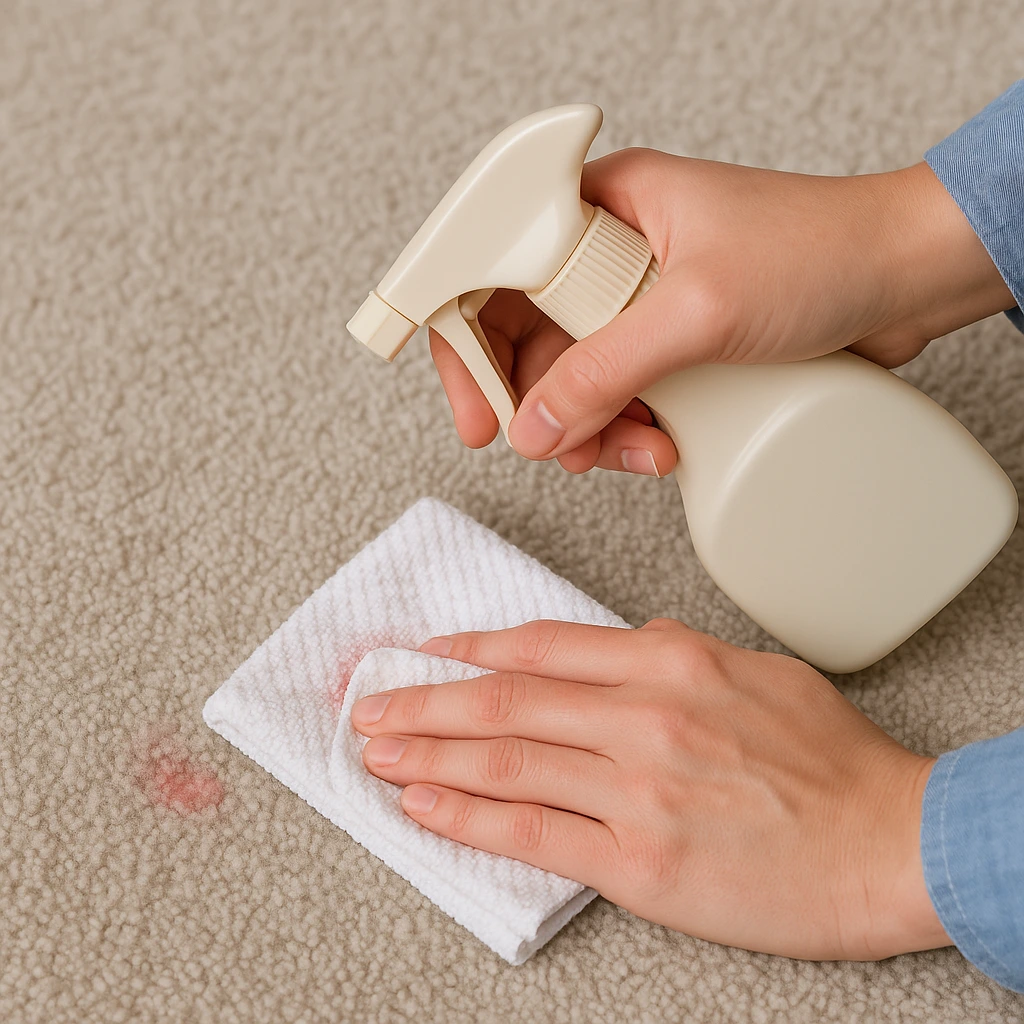
Especially with colored wax, dye stains may remain after wax removal.
- Apply a mild carpet stain remover or diluted vinegar solution to the area.
- Blot gently with a damp cloth (never scrub) until the color fades.
- Rinse with a clean damp cloth and let air dry.
What If You Don’t Have an Iron?
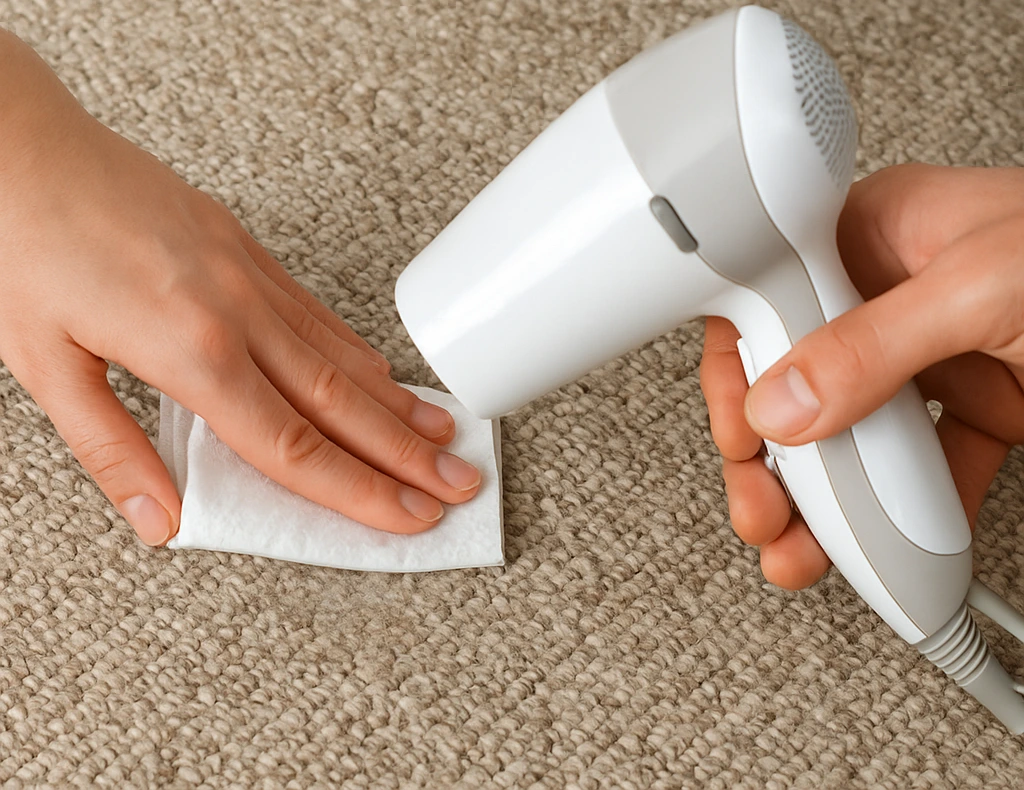
Wondering how to remove wax from carpet without an iron? A hair dryer can be just as effective:
- Use a low to medium heat setting.
- Keep the heat source at a distance to avoid scorching.
- Blot with an absorbent cloth or paper towel as the wax melts.
This method works well on delicate carpets or when you’re short on tools.
Final Step: Restore Carpet Texture
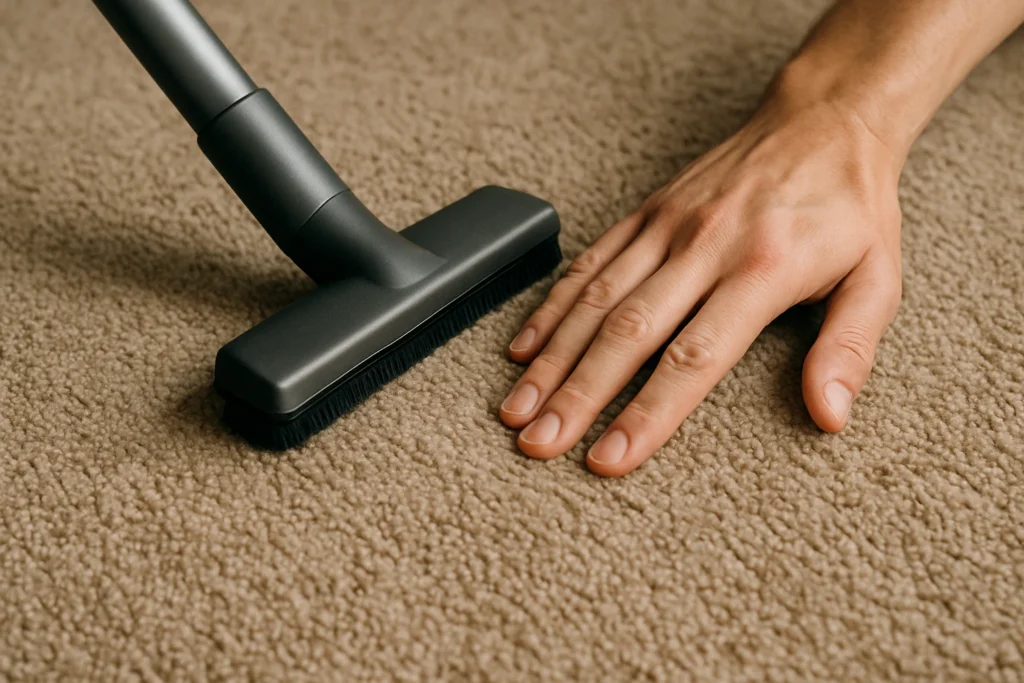
Once the stain is gone and the carpet is dry:
- Use a vacuum with a brush attachment to lift fibers back into shape.
- Gently fluff the area with your fingers or a soft-bristled brush for consistency.
Bonus: Prevent Future Candle Wax Spills
While knowing how to get candle wax out of carpet is helpful, preventing spills in the first place can save you a lot of time and effort. By adopting a few smart practices, you can enjoy your candles worry-free and keep your carpets pristine.
Trim the Wick Regularly
Before lighting any candle, trim the wick to about ¼ inch. A shorter wick creates a smaller, more controlled flame, which reduces the risk of wax splattering or dripping down the sides. Long, untrimmed wicks tend to flicker and cause uneven burning, which often leads to messy spills.
Always Use Stable, Heatproof Surfaces
Place candles only on flat, stable, and heat-resistant surfaces such as ceramic plates, glass holders, or metal trays. Avoid using uneven or soft surfaces like fabric runners or cushions, which can easily tilt or catch fire. A stable base not only prevents tipping but also contains any unexpected wax overflow.
Keep Candles Away from Drafts
Drafts from open windows, ceiling fans, or HVAC vents can cause the candle flame to flicker unpredictably. This flickering leads to uneven burning and splashing of hot wax beyond the candle’s container. Place your candles in sheltered spots away from airflow to maintain a steady burn and reduce the chance of spills
Use Candle Mats or Drip Catchers
Candle mats, often made from heatproof materials like silicone or metal, are designed to catch any dripping wax before it hits your carpet or furniture. They’re especially useful for pillar candles or decorative pieces that burn longer. These accessories are not only functional but often stylish, blending well with your décor while protecting your surfaces.
By incorporating these simple preventive tips, you can reduce the likelihood of candle wax accidents and enjoy the cozy ambiance candles bring—without the messy aftermath.
FAQs
1. Can I use a vacuum cleaner on wax before freezing it?
No, wax in its soft or semi-liquid form can clog or damage your vacuum. Always freeze and scrape before vacuuming.
2. What’s the best way to get wax out of carpet without an iron?
Use a hairdryer on medium heat and blot the area with a clean cloth to absorb melted wax.
3. Does colored wax stain the carpet permanently?
Not necessarily. After removing the wax, use a stain remover or vinegar solution to lift leftover dyes.
4. Can I use a steam cleaner to remove wax from carpet?
Steam can spread the wax deeper into fibers. It’s better to use dry heat with an iron or hairdryer.
5. What removes candle wax from carpet the fastest?
The fastest method combines freezing, scraping, and ironing with a paper towel. Most spills can be fully removed within 15–30 minutes.
Final Thoughts
Learning how to get wax out of a carpet doesn’t have to be daunting. By freezing, scraping, heating, and spot-cleaning, you can completely lift candle wax from carpets of all types. This method is chemical-free, budget-friendly, and safe when done right.
And remember: the sooner you act, the better the results.
Disclaimer
Content on Home Trending Tips is for informational purposes only. Please consult professionals before making home or garden decisions.

